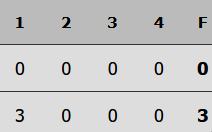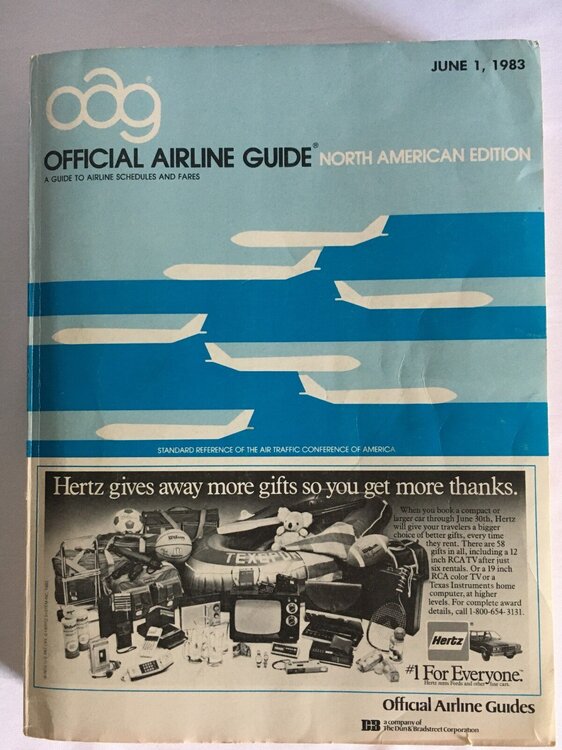Everything posted by Hagbard Celine
-
2025 Texas High School Football
welp, since you gave it away, it's the 77 and 78 plano-permian state semis permian won last year 13-10 at ratliff after a 30-year break in the series the return game is this year in frisco fantastic they decided to televise this year's game unbelievably stupid to kickoff at 11am central on saturday 30 august will be setting dvr (nfl network) the 77 game is forgotten, sandwiched between the miracle 29-28 quarterfinal comeback over highland park and the state final win 13-10 over png in front of 49k at texas stadium the 77 game was played in lubbock in a cold howling wind on plano's 2nd punt permian fumbled on their 40(?), plano recovered, gained a few yards and kicked a line-drive field goal that barely made it over the bar plano didn't cross midfield again for the rest of the game: 63 total yards, 9 punts, 3 points, 0 penetrations, and won the 78 game was played in irving and was a defensive war not unlike the '76 0u game 5 fumbles, 4 lost and 5 picks for NINE total turnovers between the 2 teams permian was on the plano 35(?) with 4 seconds left but plano was ahead on penetrations so permian had to go for the endzone, i don't remember how that play failed but it did the next week cjk5h led stratford over plano for the title at the astrodome permian may have friday night lights, but it took them 47 years to notch their first win over plano, and permian played a huge part cementing the plano mystique
-
Negative Recruiting Your Own School: The aggy Screenshot Megathread
sir, i must take exception to your denigration of dd lewis from his wiki (edited for data that's no longer current) Although he was a great college player, Lewis was selected by the Dallas Cowboys in the sixth round (159th overall) of the 1968 NFL draft, because teams thought that he was too small to play in the NFL. As a rookie at training camp, the team tried him at center, before moving him to outside linebacker. In 1969, he spent what would have been his second season doing military service. In 1973 after serving as a backup for four seasons, Lewis took over the weakside linebacker position, when Chuck Howley retired, and held this position for nine straight years. His best game was in the 1975 NFC Championship Game, when he intercepted two passes in a 37–7 victory against the Los Angeles Rams, helping the Cowboys become the first wild-card team to make it to the Super Bowl. To this day, he holds the Cowboys playoff record with 27 games played. During his NFL career, Lewis played in 12 NFC divisional-round contests, one NFC wild-card contest and nine NFC Championship Games. He made five Super Bowl appearances while winning Super Bowl VI and Super Bowl XII. During the 1980 season, he became along with Larry Cole, the first three-decade players in franchise history.[2] Lewis played for 13 years and started 135 consecutive games until his retirement after the 1981 season. Although he was never selected to a Pro Bowl or All-Pro squad, he served as defensive co-captain in 1977 and 1978. In 1984, he was named to the Cowboys Silver Anniversary Team.
-
2025 Texas High School Football
let's give it a couple of days for others to see it to your point, there were FIFTEEN (15) turnovers these 2 games across 96 minutes of football that's a turnover every 6 minutes
-
2025 Texas High School Football
the following data has a 2025 relevance...... no googling... if you are alumni of the schools and know the answers stay silent..... what games do these belong to: --- ---
-
the official and final end of the last vestige of the golden age of commercial aviation
the Official Airline Guide (OAG) will cease printed publication with the december editions this year pre-war issues always bring $75+
-
Negative Recruiting Your Own School: The aggy Screenshot Megathread
the retroactive natty claiming is not what's so incredibly full aggy it's the 1997 and 2010 "conference champions" shit that is just disgusting i will be producing a "aggy selfie guide map" for visiting sec fanbases the wall is #1b to the hall of champions #1a the wylie e. coyote stairs and the bonfire stonehenge are also top 5 but i haven't done a full ranking yet
-
Texas A&M Football 2025 - On the Edge of Glory(holes)
ctj plaintext
-
Texas Recruiting Notes 2026: Boulevard of Broken Bagmen
my spidey-sense tells me that game was responsible for where we are now in other news, the Big Tex Choice Awards nominees were announced yesterday, requiring in-depth analysis https://bigtex.com/big-tex-choice-awards/ chocolate funnel cakes sounds like heresy
-
Texas Recruiting Notes 2026: Boulevard of Broken Bagmen
you have to distinguish between normal adults that like to go to disney (with or w/o kids) and disney adults who wear mouse ears when they fuck
-
Trump’s America
every military member takes an oath to defend the constitution........
-
Texas Recruiting Notes 2026: Boulevard of Broken Bagmen
disney kicks ass for adults
-
Trump’s America
this may have been posted if so delete user https://abcnews.go.com/Politics/vote-town-hall-erupts-anger-nebraska-gop-congressman/story?id=124365038 "fascists don't hold town hall meetings" was the best he could do
-
Trump’s America
infinite rep the result set for <who are the schumerites> produces nothing this search yields more names, of course aoc and crockett top the list https://www.google.com/search?q=who+are+the+most+outspoken+congress+people+and+senators+opposing+schumer&client=firefox-b-1-d&sca_esv=1b131cb33424c794&ei=n-eTaPPfE_qiqtsPlpulyQ8&ved=0ahUKEwizq5vIrfeOAxV6kWoFHZZNKfkQ4dUDCBA&uact=5&oq=who+are+the+most+outspoken+congress+people+and+senators+opposing+schumer&gs_lp=Egxnd3Mtd2l6LXNlcnAiSHdobyBhcmUgdGhlIG1vc3Qgb3V0c3Bva2VuIGNvbmdyZXNzIHBlb3BsZSBhbmQgc2VuYXRvcnMgb3Bwb3Npbmcgc2NodW1lcki1mgFQ-wlYspgBcAV4AZABAJgBWKABsiGqAQI3NLgBA8gBAPgBAZgCLKACsxbCAgoQABhHGNYEGLADwgILEC4YgAQYigUYkQLCAgsQABiABBiKBRiRAsICEBAAGIAEGIoFGEMYsQMYgwHCAg4QLhiABBixAxjHARjRA8ICCxAAGIAEGLEDGIMBwgILEC4YgAQYxwEY0QPCAggQABiABBixA8ICERAuGIAEGLEDGIMBGMcBGNEDwgIOEC4YgwEYsQMYgAQYigXCAg4QABiABBiKBRixAxiDAcICGhAuGIAEGIoFGJECGJcFGNwEGN4EGN8E2AEBwgIKEAAYgAQYigUYQ8ICBRAAGIAEwgIREC4YgAQYsQMYgwEYxwEYrwHCAhAQLhiABBiKBRhDGMcBGNEDwgIIEAAYgAQYyQPCAgsQABiABBiKBRiSA8ICCBAuGIAEGLEDwgILEC4YgAQYsQMY1ALCAgYQABgWGB7CAgsQABiABBiKBRiGA8ICCBAAGIAEGKIEwgIFEAAY7wXCAgkQABgWGB4YxwPCAggQABiJBRiiBMICBRAhGKABwgIFECEYqwLCAgUQIRifBZgDAIgGAZAGB7oGBggBEAEYFJIHBDQzLjGgB_zmArIHBDQxLjG4B6YWwgcLMC4yLjE2LjI1LjHIB84C&sclient=gws-wiz-serp my take from schmidt is - it's time for schumer and jeffries to be forcibly removed is it possible how is it done
-
Texas A&M Football 2025 - On the Edge of Glory(holes)
they did this last year at the time i thought it was alberts imposing the embargo is this elk, alberts, who is it?
-
Texas A&M Football 2025 - On the Edge of Glory(holes)
ctj plaintext
-
Texas A&M Football 2025 - On the Edge of Glory(holes)
- Texas Recruiting Notes 2026: Boulevard of Broken Bagmen
do you want to die? how would you like to be quadded? by real, authentic, cosplay milkmen? we can arrange that- Negative Recruiting Your Own School: The aggy Screenshot Megathread
- Negative Recruiting Your Own School: The aggy Screenshot Megathread
aggy avoided the chair plaintext- Negative Recruiting Your Own School: The aggy Screenshot Megathread
1 - i remain mystified how mack failed to comprehend fair park after the 1st black saturday 2 - until i see arch throwing on 4th down up 5 scores in the 3rd, i won't believe it- 2025 CFB Polls/Rankings Thead
welp, how about a ctj top 25? we'll check back in after the committee weighs in- July 4th Hill Country Flooding Tragedy
professional good to see only question - the UGRA is not listed as part of the United Organization- Tell Me About Texas a&m
has he ever been quoted or mentioned on texags? the result set for this search says no: https://www.google.com/search?q=texags+"graham+harmon"&client=firefox-b-1-d&sca_esv=296ee4e81733ebef&filter=0&biw=1536&bih=711&dpr=1.25 how is that even possible?- brand new IB a321xlr bird strike
- The Leopards Eating Faces and Unlubed Dildo of Consequences Thread
that flood was woke! - Texas Recruiting Notes 2026: Boulevard of Broken Bagmen
Football ...
Basketball ...
Baseball ...
Other Sports ...
Futbol ...
🤫995🤫 ...
Gambling ...
Movies & TV ...
Music ...
Hobbies ...
Lulz ...
Food & Travel
...
Daily Texan ...
Business & Markets ...
Cloak Room ...
Help ...
For Sale ...
Board Discussion ...
Advertise...
Tailgate Donations
Back to top















